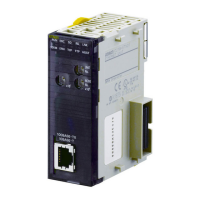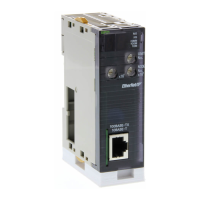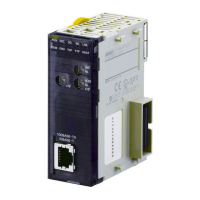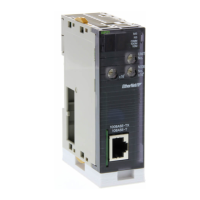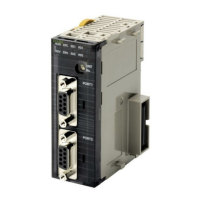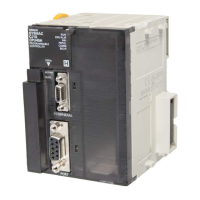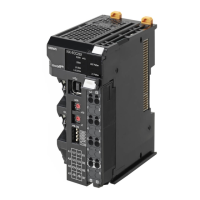Why Omron Controller failed to write the CSV text data?
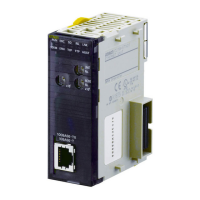
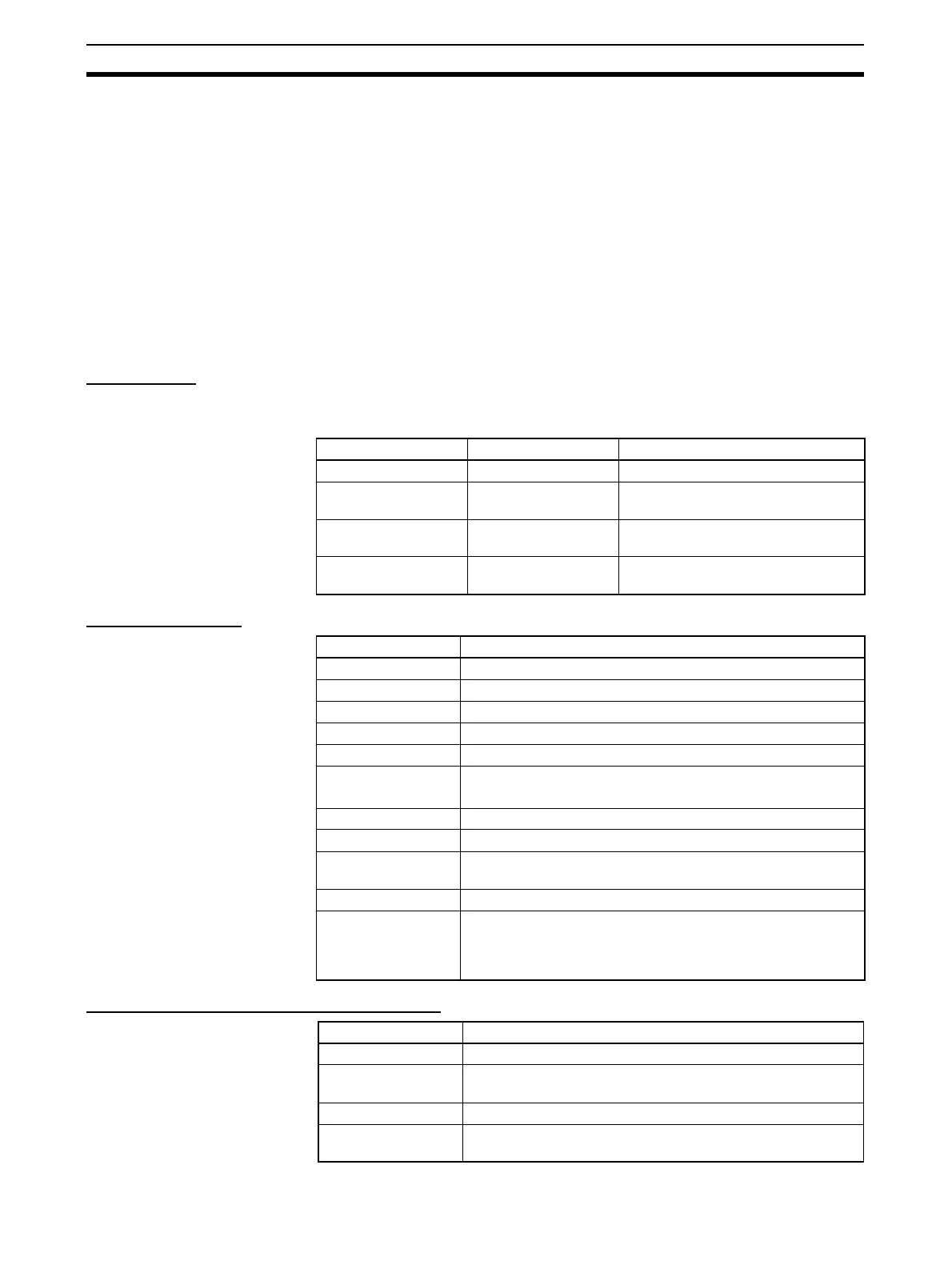 Loading...
Loading...
Why Omron Controller failed to write the CSV text data?
| Manufacturer | Omron |
|---|---|
| Category | Network Hardware |
| Mounting | DIN Rail |
| Type | PLC |
| Series | CS Series |
| Programming Language | Ladder Diagram, Instruction List, Function Block Diagram, Structured Text, Sequential Function Chart |
| Communication Ports | Ethernet |
| Protocols Supported | Modbus, Ethernet/IP |
| Power Supply | 24V DC or 100-240V AC |
| Operating Temperature | 0°C to 55°C |
| Storage Temperature | -25°C to 65°C |
| Humidity Range | 10% to 90% (non-condensing) |
| Vibration Resistance | 10 to 57 Hz, 0.075 mm amplitude; 57 to 150 Hz, 1 G |
| Shock Resistance | 150 m/s² (15 G) in X, Y, and Z directions 3 times each |
Defines the target personnel for this manual, including those with knowledge of electrical systems.
Outlines operational guidelines and safety measures for using OMRON products in various conditions.
Provides critical warnings regarding electrical shock and product modification to ensure user safety.
Specifies locations and conditions to avoid for safe and reliable control system operation.
Details safety precautions for using Ethernet Units in specific applications and system configurations.
Outlines conformity with EMC and Low Voltage Directives for products built into machines.
Provides an overview of system configuration examples and objectives for using Ethernet Units.
Highlights compatibility, speed improvements, protocol support, and simplified socket services.
Describes the basic network configuration, devices required, and setup areas for Ethernet Units.
Details general specifications, dimensions, and software configuration for CS and CJ series Ethernet Units.
Explains FINS/UDP and FINS/TCP communication services, including basic and upgraded functions.
Identifies component names, switches, and LED indicators for CS and CJ series Ethernet Units.
Compares features and specifications between previous and new models of Ethernet Units.
Details the upgrades and new functions introduced in Unit Versions 1.3, 1.4, and 1.5.
Provides a step-by-step procedure for initial setup and connection of the Ethernet Unit.
Explains how to set the Unit Number and Node Address using rotary switches for CS and CJ series.
Details the procedures for mounting Ethernet Units to CS-series and CJ-series PLC racks.
Covers basic installation precautions, recommended products, and cable laying guidelines.
Explains Ethernet connector specifications and the procedure for connecting twisted-pair cables.
Describes how to create I/O tables for identifying and registering Units with the PLC.
Details the steps for setting up the Ethernet Unit using CX-Programmer and the Web browser.
Explains essential settings like IP Address, Subnet Mask, Baud Rate, and TCP/IP keep-alive.
Covers specific settings for FINS/UDP, FINS/TCP, Socket Services, FTP, Mail, and Mail Reception.
Describes how to perform communications testing using PING commands and checking status.
Details limitations and procedures for converting from previous Ethernet Unit models.
Provides an overview of settings for broadcast, IP, subnet mask, FINS/UDP, FINS/TCP, and FTP.
Details FINS/TCP connection setup, including IP address protection and connection parameters.
Explains DNS server setup, including IP address, port number, and retry timer settings.
Covers SMTP server setup for sending mail, including designation method, IP address, and port.
Details POP server setup for receiving mail, including IP address, account name, and password.
Specifies destination mail addresses for sending mail from the Ethernet Unit.
Configures mail sending triggers, user data, error logs, and file attachments.
Sets up mail reception, including attached file settings and command execution.
Configures automatic clock adjustment using SNTP server settings and designation methods.
Details HTTP server setup, including Web function usage, password, and port number.
Describes data stored in offset positions for Unit Control Bits and Socket Status.
Details data stored in offset positions for FINS/TCP connection status and socket service parameters.
Covers read-only and read/write bits/words related to communications port status and errors.
Explains IP address configuration, classes, allocation, Ethernet Unit settings, and subnet masks.
Details specifying nodes, pairing addresses, and application examples for FINS communications.
Differentiates between private and global IP addresses and their usage scenarios.
Introduces FINS communications on Ethernet networks, methods, and service specifications.
Explains the FINS/UDP method, its features, frame format, and procedure for using it.
Details the FINS/TCP method, its characteristics, frame format, and connection management.
Guides on creating routing tables, including local and relay network tables, and setting examples.
Covers connecting to PLCs using CX-Programmer (CX-Server) and FinsGateway.
Explains FINS commands (SEND, RECV, CMND) and PLC communications data areas.
Provides precautions and methods to avoid errors caused by high traffic in FINS communications.
Lists command codes and response codes for FINS commands sent to Ethernet Units.
Describes the format of FINS commands when using sockets, including PLC memory areas.
Details specific FINS commands, parameters, responses, and error codes for Ethernet Units.
Provides a guide to troubleshooting errors based on Ethernet Unit indicator statuses.
Explains how to interpret error status bits in the CPU Unit's CIO Area for Ethernet Unit errors.
Describes the error log content, location, and FINS commands for reading/clearing errors.
Offers step-by-step procedures for diagnosing startup, FINS, socket, FTP, and network connection issues.
Lists UNIX socket service error messages and their probable remedies for troubleshooting.
Explains using a Web browser for Ethernet Unit settings and status monitoring.
Provides precautions and procedures for replacing a defective Ethernet Unit.
Details the settings required after replacing an Ethernet Unit.
Outlines information that must be stored in a new CPU to replace a defective one.
Lists parts that make up the Ethernet Unit and emphasizes regular inspection.
Provides guidelines for choosing the inspection period based on operating conditions.
Lists inspection items and their specified standards for environment and mounting.
Lists standard tools and tools required under special circumstances for inspection.
Explains how to use a Web browser for easy access to Ethernet Unit system settings and status.
Details the mapping between Web menu items and CX-Programmer functions for settings.
Lists status information accessible via Web browser, including IP status, TCP status, and error logs.
Explains the requirement for password entry for unauthorized access prevention and default password.
Provides a procedure for setting the Unit’s system settings, such as the HTTP password.
